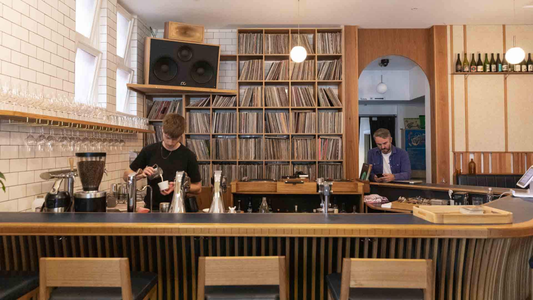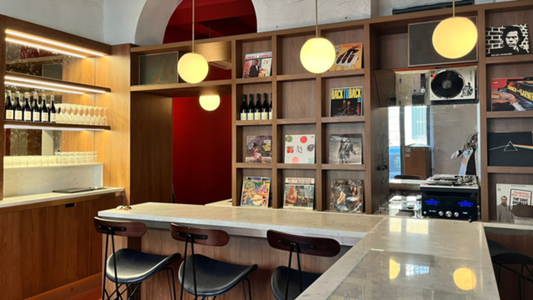
The Shape of Intimacy
Designing closeness through tone, shadow, and stillness.
By Rafi Mercer
Every listening space, at its heart, is an experiment in closeness.
Not crowding, not romance — but that quiet, wordless proximity that happens when sound draws people into the same emotional field. You can feel it in the air: the warmth between notes, the hush between breaths, the sense that something shared has begun.
Intimacy is geometry. It lives in distance, angle, and volume as much as feeling.
How intimacy takes shape in sound:
- Proximity — sound that feels near but not invasive.
- Soft edges — no harshness, no glare; everything rounded and human.
- Shadow — light that conceals more than it reveals.
- Restraint — silence and pause as gestures of care.
- Tone — warmth that carries emotion without demand.
In Tokyo’s Bar Martha, intimacy is built into the design. Lighting stays low, voices low, bass soft. The room itself whispers: listen, don’t talk. In that quiet, people lean closer — not for conversation, but connection. The music becomes a bridge that doesn’t require words.
At home, the same principles hold. Dimming the light by a fraction, lowering volume until detail becomes delicate, placing chairs just close enough for presence — these small calibrations change everything. Intimacy is less about space than permission.
Tone plays a part too. Analogue warmth, tube glow, low compression — these soften boundaries. Digital clarity can be beautiful, but it can also be distant. The art lies in finding the sound that invites rather than insists.
Intimacy is not only between people; it’s between listener and record. When you play an album in full, alone, with nothing else competing, it’s the same conversation — honest, unhurried, complete. The room feels smaller, time slower, attention deeper.
The shape of intimacy is not a heart; it’s a circle. Music, light, and air held in gentle equilibrium. You, the room, and the sound — each tuned to the other, each aware of the quiet between.
That’s where listening becomes love — not for a person, but for presence itself.
Quick Questions
What makes sound feel intimate?
Warm tone, gentle volume, and small physical distance — creating nearness without intrusion.
How do lighting and space affect intimacy?
Soft shadows and contained light focus attention inward, encouraging calm and closeness.
Can intimacy exist in public spaces?
Yes — in shared silence, mutual attention, and the respect that quiet creates.
Rafi Mercer writes about the spaces where music matters.
For more stories from Tracks & Tales, subscribe, or click here to read more.







